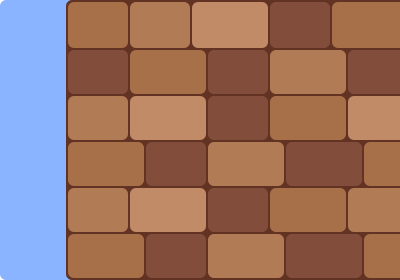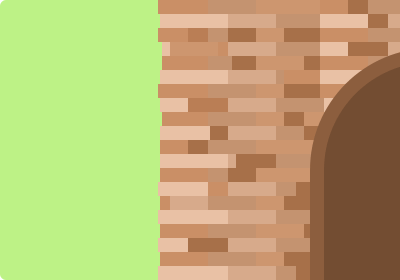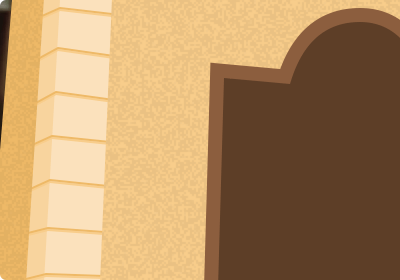
Aluminum Siding
Aluminum Siding - 20 to 50 years.
There are some key factors that you'll want to keep in mind for your home as you choose the right siding (2).
This is all about what looks good you you as a homeowner. Are you accustomed to colonial mason work? Try out a brick exterior for an old fashioned treat. Perhaps you're looking for something more modern? Fiber cement is quickly making headway as one of the newer siding materials on the market. Or perhaps you're just looking for something practical and functional? Vinyl siding is an affordable, well insulated choice that will not only serve you well, but comes in many different styles (3). The style, color, and even texture of the siding are all things to consider.
Back to topAs mentioned before, siding can be a great boon to energy savings each month (4). This article will go over installation and repair costs if you scroll further down to each material type, but here is a generic example of how much it might cost the average sized home to re-side with a new material (per square foot):
Another huge cost benefit of having new siding installed is that it can make your home far more energy efficient. Depending on what type of material you go with, your home can potentially save up to 20% of your home's heating and cooling costs by going with the right option (5). This will depend largely on your area's climate, the amount of sunlight your house receives, and the R-rating of your siding (6). So while re-siding your home can get pricey, you are able to actually save money by doing so.
One of the most important bits of information when it comes to your siding is simply knowing how long it will last! The vast majority of the different forms of siding have a fifty year life span (7). With this being said, all the materials are unique in their longevity and react differently to weather, climate, heat, and moisture in the air. Here's a quick breakdown (8):

Aluminum Siding - 20 to 50 years.

Brick Siding - 70 to 100+ years.

Fiber Cement - 10 to 20 years.

Siding - 50 to 100 years.

Stone veneer - 80 to 110 years.

Stucco Siding - 60 to 80 years.

Vinyl Siding - 20 to 50 years.

Wood Siding - 10 to 100 years (depends on quality, moisture, and the total amount of lifetime paint jobs).
This may sound like a no brainer, but the ability to stand up against rain, wind, and the sun is actually an important part of siding. Because each material is so different, they all have their own strengths and weaknesses against certain elements. Metal, for example, can take on high wind areas and hurricanes. However, heat can warp it and rain will eventually cause rust problems down the line. Wood is excellent at combating the elements, but can succumb to moisture or fungal rot and decay (9). Otherwise, most siding materials have fair resistances to weather in your area.
Back to topStudies have shown that vinyl siding is one of, if not the best, for of siding insulation that you can purchase for your home on today's market (10). As such, that also makes it one of the most energy efficient siding options you can put on your house (11). As an added bonus, vinyl also combats mold and is resistant to mildew. While it can crack, it can also easily be repaired. No wonder it's seen such a boost in popularity over the recent years. It may cost an upwards of $14,000 to $23,000 dollars to completely re-side the average home in vinyl.
Back to topUsually found on smaller mobile home units, aluminum siding is a cost-effective material that does well in windy, rainy, or dry regions. It is also completely fire resistant, and unable to be completely lost in a house fire. This, coupled with the incredibly low maintenance costs means that aluminum siding for an average home can cost between $5,000 to $10,000 (12).
Back to topA large advantage of wood is that it can be more easily replaced than any other siding. It is also clearly the most green material, and insulates your home better than most. Lumber pricing varies greatly depending of type, quality, and region. To outfit an average home of about 1,250 square feet with wooden siding, the following figures come into place l (13):
Essentially a mixture of wood fibers, cement, and sand, fiber cement has the look of wooden siding without the cost or vulnerability. Being a newer type of affordable material has put it right up next to vinyl in terms of popularity amongst young homeowners. To outfit an average home with fiber cement will cost around $13,000 and $25,000.
Back to topMade to mimic the unique style and feel of Spanish-Mediterranean architecture, but at a lower price, stucco has proven a versatile siding material for homeowners who are looking for a little something more than the usual. It's great for insulation, fire resistant, and as an added bonus, deterrs acoustic vibrations as well. So for this soundproof siding the median cost for an average home will run about $11,000 to $15,000 (14).
Back to topMasonry has a hefty price tag, but boasts a plethora of benefits that the other materials can't touch. To re-side your average-sized home in brick the cost will run an upwards of $15,000 to $35,000 or more (15). However, you do get a lot of perks for that price. Among them are:
Nothing quite has the look and feel of natural stone. It works great as siding, giving your home an air of regal excellence. Feel free to match this up with a stone slate patio or walkway for the ultimate look. There isn't much that stone can't do. Stone siding for the average sized home will run about $15,000 to $19,000.
Back to top
Enter service and
zip code to view
cost breakdown